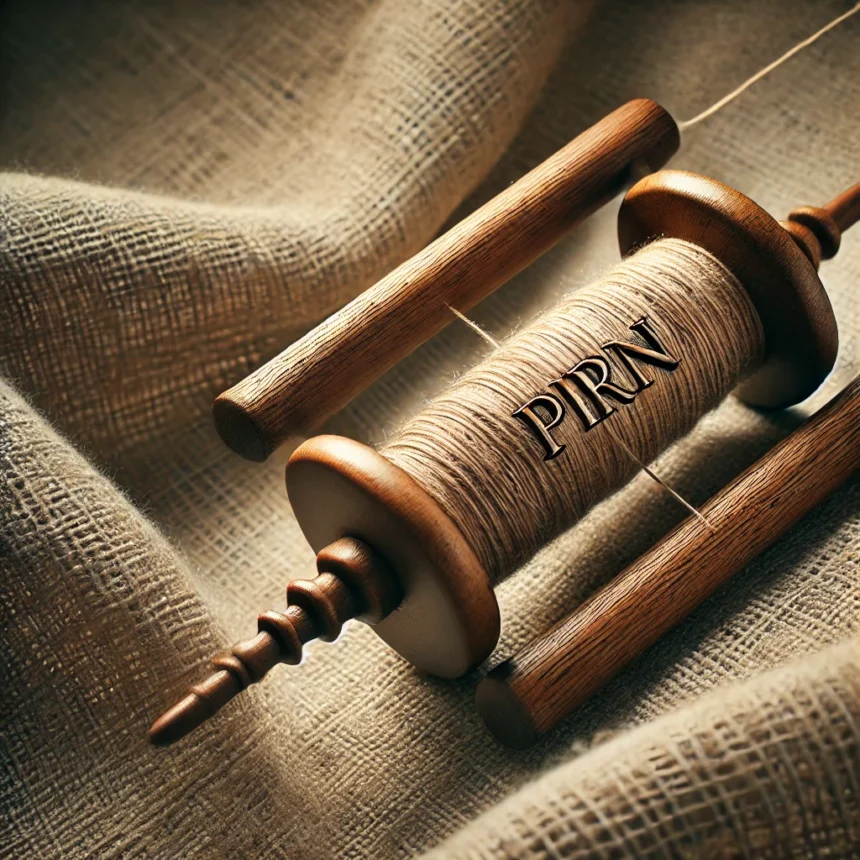What is Pirn?
At its core, pirn refers to a specific tool used in the weaving and textile industries. It’s a small spool or reel that holds the thread or yarn and is inserted into a shuttle. The pirn allows smooth unwinding of the thread while weaving fabrics. While this might sound complicated, the concept is pretty straightforward. With a pirn, weaving machines would be able to function efficiently.
The pirn plays a key role in making fabrics, making it a vital tool in the textile industry. So, when you think of pirn, think of it as a necessary element in the world of fabric production.
The Importance of Pirn in Weaving
Weaving involves interlacing two sets of yarn or threads to form a fabric or cloth. For this to happen smoothly, the threads must be held in place by something. This is where the pirn comes into play. It ensures the thread is wound tightly and dispenses it smoothly during the weaving process.
With the use of a pirn, weavers can produce high-quality fabrics at a faster rate. It is an integral part of the weaving shuttle, which is responsible for passing the weft thread between the warp threads on the loom. The smooth operation of weaving machines often depends on a properly prepared pirn.
Types of Pins
There are different types of prints, each designed for specific uses in various weaving machines. Some of the most common types include:
- Handheld Pirn: Used in small, manual looms.
- Automatic Pirn: Used in large, industrial weaving machines that automatically replace the pir when the thread runs out.
- Plastic Pirn: Lightweight and durable, often used in modern machinery.
- Wooden Pirn: Traditional and used in older machines or by artisan weavers.
Each type of pir serves a specific purpose, but all have the same goal: to hold and dispense thread efficiently.
How Pirn Revolutionized the Textile Industry
Before the invention of the pirn, weaving was a slow and manual process. Artisans would have to manually wind the thread onto sticks or spools, which took a lot of time. The introduction of the pir allowed for the automation of many weaving tasks.
With the help of the pirn, textiles could be produced more efficiently, at a larger scale, and with better precision. Factories adopted automated weaving looms that used pirns, which significantly boosted the production of fabrics.
This revolutionized the textile industry, enabling it to grow into one of the largest sectors in the world. The efficiency provided by the pirn contributed to the mass production of clothing and other fabric-based products.
Pirn vs. Bobbin: What’s the Difference?
A common question many people have is the difference between a pir and a bobbin. While both are used to hold threads or yarn, they serve different functions in weaving and sewing.
- Pirn: A pirn is designed for use in a shuttle loom. It is narrow and is used specifically for weaving purposes. The pir holds the weft yarn and unwinds it as the shuttle moves back and forth on the loom.
- Bobbin: A bobbin is more commonly used in sewing machines. It holds the thread that is used for stitching, and the thread unwinds as the sewing machine operates.
Though they may look similar, the difference between a pir and a bobbin is in their specific uses. The pir is for weaving, while the bobbin is for sewing.
The Making of a Pirn
A pir is made using various materials such as wood, plastic, or metal, depending on the type of loom and the industry requirements. The manufacturing process of a pir involves precision, as it needs to fit into the shuttle properly. If the pirn is too loose or too tight, the weaving machine won’t work effectively.
Here’s a simple step-by-step guide on how a pirn is made:
- Material Selection: The type of print determines the material. Traditional pir are made from wood, while modern ones are made from plastic or metal.
- Shaping the Pirn: The raw material is shaped into the form of a spool. It must be cylindrical and smooth for the yarn to wind around it properly.
- Threading Mechanism: The pir is designed with a specific threading mechanism to ensure the thread or yarn unwinds smoothly during weaving.
- Quality Control: Each pir undergoes quality checks to ensure it fits perfectly into the shuttle and can hold enough thread for efficient weaving.
The Use of pir in Different Industries
While the primary use of a pir is in weaving, it has also found applications in other industries. Here’s a look at where else pirns are used:
- Textile Industry: The most common application of the pir is in the textile industry for fabric production.
- Fishing Industry: Some fishing rods use a similar tool to wind fishing lines, although this tool is more commonly referred to as a reel.
- Crafting: Some artisans and crafters use pir in traditional weaving or craft projects, especially those involving handmade fabrics.
Pirn Care and Maintenance
For weavers and textile manufacturers, maintaining a pir is essential for smooth operations. Here are a few tips for caring for and maintaining your pirn:
- Regular Cleaning: Keep the pir clean from dust and lint, as these can accumulate and cause friction during weaving.
- Check for Wear: Over time, a print may wear out, especially if it’s made from wood. Inspect it regularly for cracks or damage.
- Proper Storage: Store pir in a dry place to avoid exposure to moisture, which could damage wooden or plastic pirns.
- Replace When Necessary: If a pir is damaged or no longer functions smoothly, it’s best to replace it to avoid disrupting the weaving process.
The Evolution of Pirn Technology
The pirn has evolved alongside advancements in technology. Originally made by hand, pir are now mass-produced with machines that ensure precision. Modern pir are designed for use in high-speed weaving machines, where even the smallest error in the design could result in significant production delays.
Automation in the textile industry has also led to the development of self-replacing pir . In these systems, when a pirn runs out of thread, the machine automatically replaces it with a new one. This innovation has made textile production faster and more efficient.
FAQs About Pirn
1. What is a pir used for?
A pirn is used in weaving to hold and dispense the weft thread during the fabric-making process.
2. How is a pirn different from a bobbin?
While both hold thread, a pir is specifically used in weaving, and a bobbin is used in sewing.
3. What materials are pirns made from?
Pins can be made from wood, plastic, or metal, depending on their use and the type of loom.
4. Can I reuse a pen?
Yes, prints can be reused multiple times as long as they are not damaged or worn out.
5. How do I maintain a pirn?
Regular cleaning and inspecting for damage are essential to maintain the smooth operation of a pir in the weaving process.
6. What industries use pirns?
Pirns are primarily used in the textile industry but can also be found in other sectors, such as fishing and crafting.
Conclusion
The pirn may be a small tool, but its impact on the weaving and textile industries is undeniable. It has allowed for increased efficiency in fabric production and continues to be an essential tool in modern weaving machines. By understanding the pir and its uses, you gain insight into a critical part of the textile manufacturing process.







